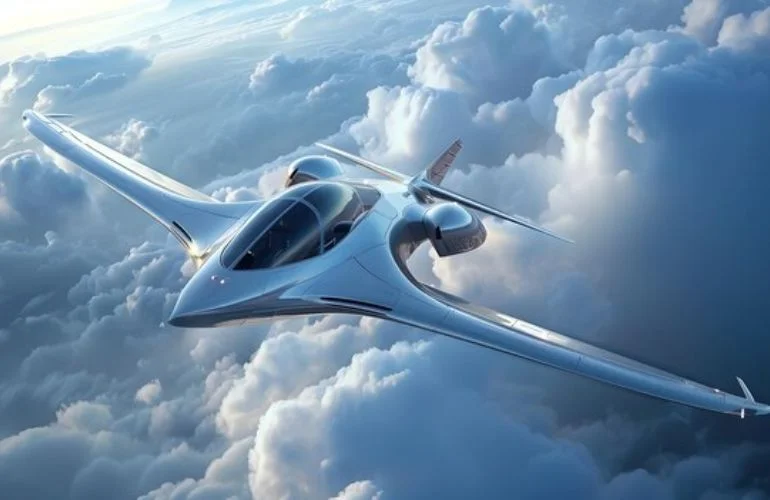The concept of hypersonic travel has been generating a lot of excitement in recent years, promising to drastically reduce travel times across the globe. But with these promises comes the big question: Is hypersonic travel stable? Hypersonic speeds—those above Mach 5—are fast enough to fly from New York to Tokyo in just a couple of hours. However, ensuring that hypersonic travel is both safe and reliable is a significant challenge. In this article, we will explore the technological advancements being made to make hypersonic travel stable and how these developments could revolutionize air travel.
What Is Hypersonic Travel?
Definition of Hypersonic Travel
Hypersonic travel refers to speeds that exceed Mach 5, which is five times the speed of sound (3,836 miles per hour). At such high speeds, hypersonic travel would allow aircraft or spacecraft to traverse great distances in a fraction of the time it takes today. To put this into perspective, while a typical commercial airliner cruises at around 575 miles per hour, a hypersonic vehicle could achieve over 3,800 miles per hour.
Must read Why You Should Use a Royal Caribbean Travel Agent
Challenges of Hypersonic Travel
Although hypersonic travel sounds thrilling, it presents unique challenges. The air resistance at such high speeds generates immense heat, which can cause stability issues for the aircraft. The materials used to build these vehicles must be able to withstand extreme temperatures while maintaining their structural integrity. Additionally, achieving stable control of the aircraft at these speeds is essential to ensure passenger safety.
Technological Advancements Aiming to Make Hypersonic Travel Stable
Materials Science Breakthroughs
One of the critical components to making hypersonic travel stable is the development of advanced materials. The extreme heat generated during hypersonic flight requires materials that can tolerate temperatures exceeding 1,500 degrees Celsius without deforming or breaking down. Scientists are working on next-generation composite materials and ceramics that are heat-resistant and lightweight to ensure stability and fuel efficiency.
Aerodynamic Designs
The stability of hypersonic travel also depends on the aerodynamic design of the vehicle. Engineers are experimenting with advanced shapes and configurations that reduce drag and improve airflow around the aircraft at high speeds. One of the main goals is to create a design that keeps the vehicle stable during different phases of flight, especially during rapid transitions between subsonic, supersonic, and hypersonic speeds.

Engine Technology
For hypersonic travel to be stable, the engines powering these vehicles must be incredibly advanced. Scramjet (Supersonic Combustion Ramjet) engines are a promising solution, as they can operate efficiently at hypersonic speeds by using the vehicle’s forward motion to compress incoming air before combustion. However, scramjet engines are still in the experimental phase, and much work is being done to make them reliable for commercial use.
How Hypersonic Travel Will Revolutionize Air Transportation
Faster Global Travel
The most obvious benefit of hypersonic travel is the ability to drastically shorten flight times. Imagine being able to fly from Los Angeles to Sydney in just 3 hours instead of 15. This would not only revolutionize the travel industry but also open up new opportunities for business and leisure travelers who need to reach destinations quickly.
Reduced Carbon Footprint
While traditional jet engines rely heavily on fossil fuels, hypersonic vehicles could be designed to use more sustainable energy sources, such as hydrogen. With the right advancements, hypersonic travel stable could lead to faster journeys with a reduced environmental impact, addressing one of the key concerns in modern air travel.
Space Tourism and Beyond
Hypersonic technology could also pave the way for space tourism. As companies like SpaceX and Blue Origin work toward making space travel accessible to civilians, hypersonic travel could be an intermediary step. Hypersonic vehicles could reach the edge of space, offering passengers a brief experience of weightlessness before returning to Earth.
Potential Applications of Hypersonic Travel
Military Use
Hypersonic technology is already being explored for military applications. The ability to deploy troops, weapons, or supplies across vast distances in a matter of minutes could change the nature of defense strategies worldwide. The military is also developing hypersonic missiles, which would be faster and more precise than existing weapons.

Emergency Medical Transport
Hypersonic travel could also be used for emergency medical transport, where every second counts. Medical personnel and life-saving supplies could be delivered to remote areas or disaster zones much faster than conventional means allow, potentially saving countless lives in critical situations.
Commercial Air Travel
In the future, hypersonic travel could become a standard for commercial air travel. With the right advancements in safety and stability, major airlines may begin offering hypersonic flights to meet the demands of passengers looking to travel faster than ever before.
Making Hypersonic Travel Safe
Addressing Heat Challenges
The heat generated by hypersonic speeds poses one of the biggest challenges to hypersonic travel stable. Researchers are exploring new ways to dissipate heat effectively, such as advanced cooling systems and heat shields. Ensuring the aircraft can handle high temperatures without compromising structural integrity is crucial for safe and stable flights.
Managing G-Forces
At hypersonic speeds, passengers will experience much higher G-forces than they would on a traditional flight. G-forces are the physical forces that push down on the body due to rapid acceleration or changes in direction. Engineers must design hypersonic vehicles that can manage these forces and keep passengers comfortable and safe.
Navigation and Control
One of the final pieces to making hypersonic travel stable is developing sophisticated navigation and control systems. These systems must be able to respond quickly to changes in the environment, such as turbulence or shifts in air pressure, to keep the vehicle on course and ensure a smooth, stable flight.

Conclusion: Is Hypersonic Travel Stable?
In conclusion, while there are still challenges to overcome, the future of hypersonic travel stable looks promising. Advances in materials science, aerodynamics, and engine technology are making strides toward ensuring that hypersonic vehicles can operate safely and reliably. Although hypersonic travel is not yet a reality for commercial air travelers, ongoing research and development are bringing us closer to a future where flying at speeds above Mach 5 is both practical and stable.
With the potential to revolutionize the way we travel, hypersonic technology is set to change the aviation industry and make long-distance travel faster than we ever imagined. Click here for more information.
What makes hypersonic travel unstable?
Hypersonic travel becomes unstable due to extreme heat generated by high speeds and the difficulty of controlling an aircraft at Mach 5 or higher. Advanced materials and designs are being developed to improve stability.
Is hypersonic travel possible for commercial flights?
While hypersonic travel is currently in the experimental stage, there is potential for commercial hypersonic flights in the future once safety and stability challenges are resolved.
What are the benefits of hypersonic travel?
Hypersonic travel significantly reduces flight times, allowing passengers to reach global destinations in a matter of hours. It could also be used for military, emergency medical transport, and space tourism.
What kind of engines are used for hypersonic travel?
Scramjet engines are being developed for hypersonic travel. These engines use the vehicle’s forward motion to compress air before combustion, making them efficient at high speeds.
Will hypersonic travel have a lower environmental impact?
With advancements in sustainable energy sources, such as hydrogen, hypersonic travel could have a lower environmental impact compared to traditional fossil fuel-powered jets.











